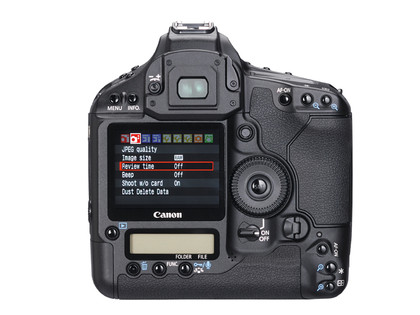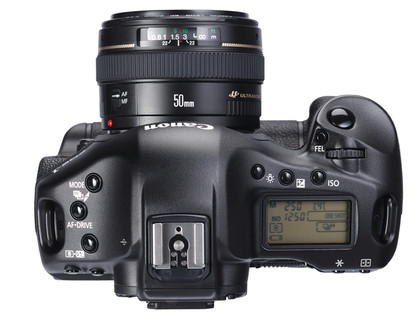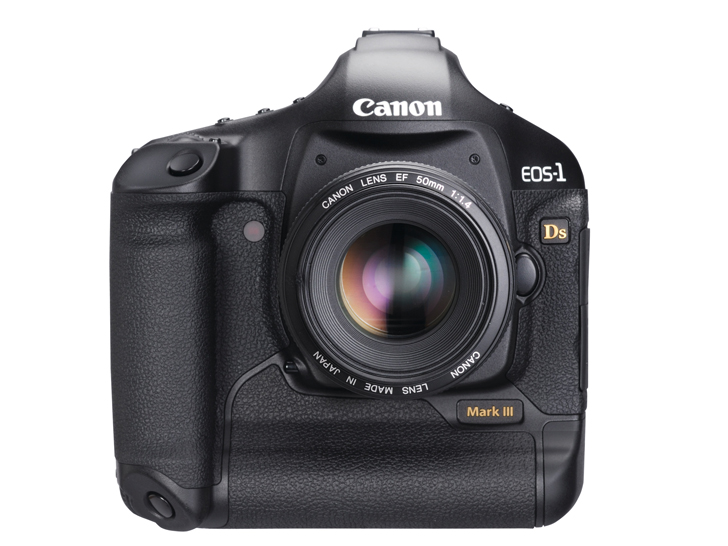TechRadar Verdict
Pros
- +
Good build quality
- +
Excellent performance at low ISOs
- +
Decent AF system
Cons
- -
Noise evident at high ISOs
- -
Some control issues
- -
Signs of chromatic aberration
- -
Distinctly soft JPEGs
Why you can trust TechRadar
Like other professional DSLRs, notably previous EOS 1Ds models and Nikon's D2x/D3, the EOS 1Ds Mk III is much taller than the average digital SLR. A big, fat battery housing sits in the base of the body, and this also allows space for an additional, vertical shutter release.
This makes a lot of sense in a camera that's likely to be used extensively for portrait-format shots. The large control dial on the back of the camera lends itself well to this arrangement, proving readily accessible with your right thumb, whichever way round you hold the camera (there's a second main control dial on the bottom right corner of the camera for vertical shooting).
It's a weighty camera even before you've attached the lens. The body is built from magnesium alloy and the switchgear is weather-sealed. All the panels fit perfectly, the finish is an excellent combination of tough-feeling matt plastic and leather-look rubber, and it looks and feels flawless. So it should, of course, given the £6,000 asking price.
Plain and simple?

The Canon does feel a bit Spartan. It's a professional tool, which should be as simple as possible while still getting the job done, of course, but here and there you wonder if the simplicity hasn't started to compromise the usability. For example, there's no white balance button. Instead, to change the white balance you must press the Func button on the back of the camera twice (the first press is for changing the image size/format). You then turn the rear control wheel to choose a preset.
This duplication of button functions is seen on the top of the camera too, and the cluster of three buttons to the left of the pentaprism does offer some potential for confusion. The front button has only one function and is used for changing the exposure (PASM) mode.
The middle button has two functions, changing the AF mode or the drive mode, depending on whether you turn the front dial or the rear dial. The rear button also has two functions, adjusting the metering mode or flash compensation. However… we said the front button had only one function – in fact it has two. If you hold this and the second button down, you can set auto-exposure bracketing options.
Now we can anticipate the objections. Existing EOS owners will complain they're perfectly used to this kind of duplication, and that these control combinations are both ergonomic and efficient once you've learned them. Maybe so, but you've still got to learn them. The 1Ds might prove efficient, but it's not at all obvious.
On the rear of the camera, the EOS control wheel means that an additional four-way 'thumbstick' is needed for menu navigation and panning round zoomed images during playback. It's not bad, but it's not the same as a decent-sized navipad. The menus themselves are clear, but distinctly crude looking and the large and simplistic menu icons look dated.
The AF system seems decent enough, but the speed will depend to an extent on the lens you're using. The viewfinder's good and big and clear, as you'd expect from a full-frame SLR, and the 3-inch LCD is good too – though its 230,000-pixel resolution is some way short of the 920,000 dots you get with the Nikon D3.
Overall, the 1Ds Mk III does feel vaguely underwhelming. It must rely on its internal differences – specifically that 21-megapixel sensor – to make a convincing case for its price tag, which is nearly twice that of the Nikon's.
Picture quality

Current Nikon and Canon DSLRs do appear to have subtly different picture qualities. Nikons tend towards rich, deep colours that some may find over-intensified. Canon SLRs lean more towards a naturalistic colour rendition, which is good in theory, but it means you have to work harder in dull lighting to get vivid results. You can do this with the 1Ds by experimenting with the Picture Styles or shooting RAW and 're-processing' the images later, but this mean extra work.
There's another, more compelling reason for shooting RAW. Like other EOS SLRs, the 1Ds Mk III produces distinctly soft JPEGs. If you look at the images up close you'll start to wonder whether that 21MP sensor has really done you any good at all. It's only when you shoot RAW files and process them with the bundled Digital Photo Pro application that you see what the Canon can do.
Not only that, we tested the 1Ds Mk III with a Canon 25-85mm zoom (the only 'standard' zoom available for the test) and it became apparent the sensor was much better than the lens, which produced soft edges at wider apertures and chromatic aberration. The Canon will only make sense if you also invest in Canon's top-quality L-series optics.
Any worries about increased noise from the extra pixels in the new sensor were soon dispelled. Noise does start to become noticeable at ISO 400 and is clearly visible at ISO 1600, but the 1Ds is nevertheless way ahead of any APS-C SLR. The Nikon D3 is better still, mind.
For Canon users who already have Canon lenses and accessories, and who are perhaps looking to upgrade a 1Ds or 1Ds MkII, it's a good bet. But for those considering their first pro system, it's another story. The 1Ds is no longer the only full-frame SLR and, what's more, it's more expensive than the Nikon D3. It may offer more ultimate resolution in ideal conditions, but it can't match the Nikon's frame rate or its high ISO performance.
The TechRadar hive mind. The Megazord. The Voltron. When our powers combine, we become 'TECHRADAR TEAM'. You'll usually see this author name when the entire team has collaborated on a project or an article, whether that's a run-down ranking of our favorite Marvel films, or a round-up of all the coolest things we've collectively seen at annual tech shows like CES and MWC. We are one.
